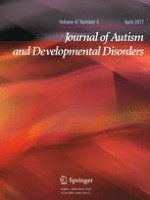12-01-2017 | Original Paper
Working Memory Impairments in Chromosome 22q11.2 Deletion Syndrome: The Roles of Anxiety and Stress Physiology
Gepubliceerd in: Journal of Autism and Developmental Disorders | Uitgave 4/2017
Log in om toegang te krijgenAbstract
Stress and anxiety have a negative impact on working memory systems by competing for executive resources and attention. Broad memory deficits, anxiety, and elevated stress have been reported in individuals with chromosome 22q11.2 deletion syndrome (22q11.2DS). We investigated anxiety and physiological stress reactivity in relation to visuospatial working memory impairments in 20 children with 22q11.2DS and 32 typically developing (TD) children ages 7 to 16. Children with 22q11.2DS demonstrated poorer working memory, reduced post-stress respiratory sinus arrhythmia recovery, and overall increased levels of cortisol in comparison to TD children. Anxiety, but not physiological stress responsivity, mediated the relationship between 22q11.2DS diagnosis and visuospatial working memory impairment. Findings indicate that anxiety exacerbates impaired working memory in children with 22q11.2DS.
